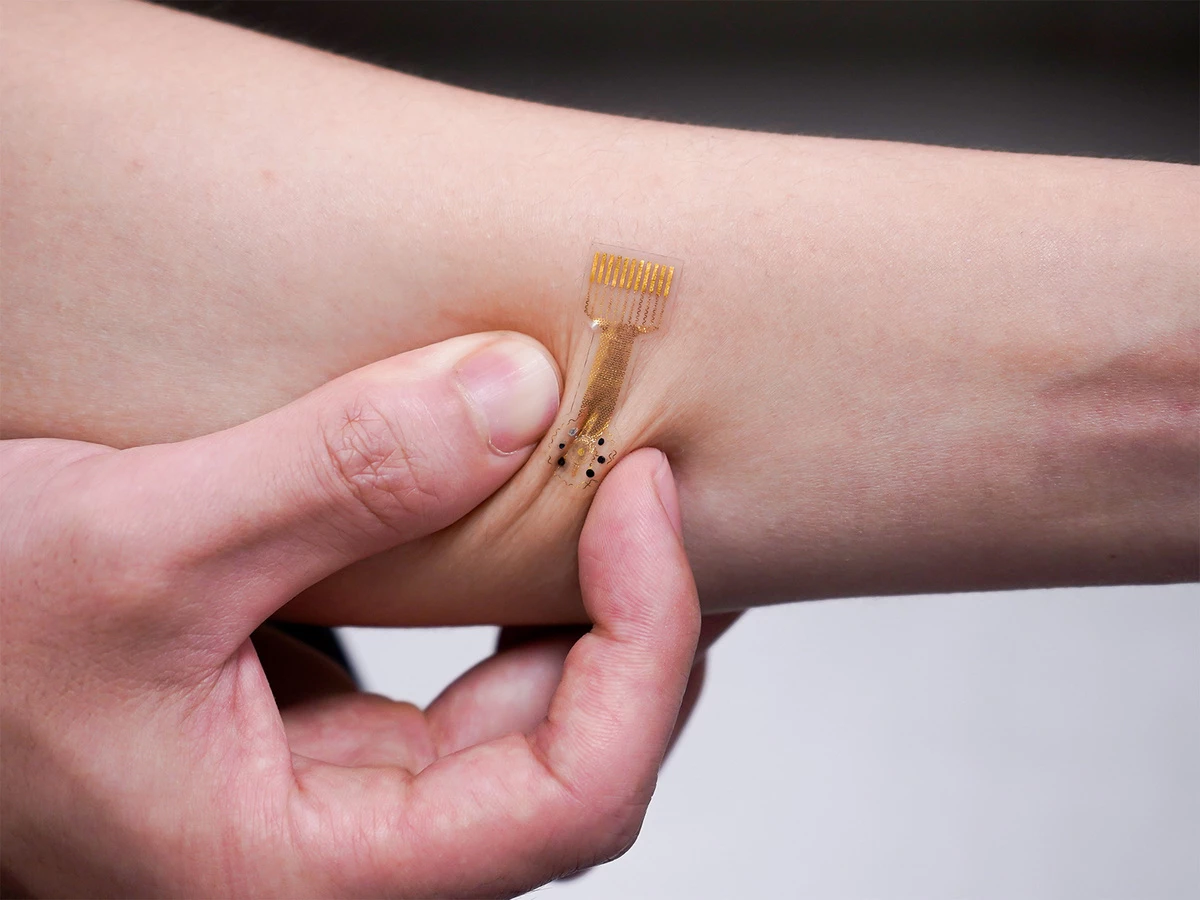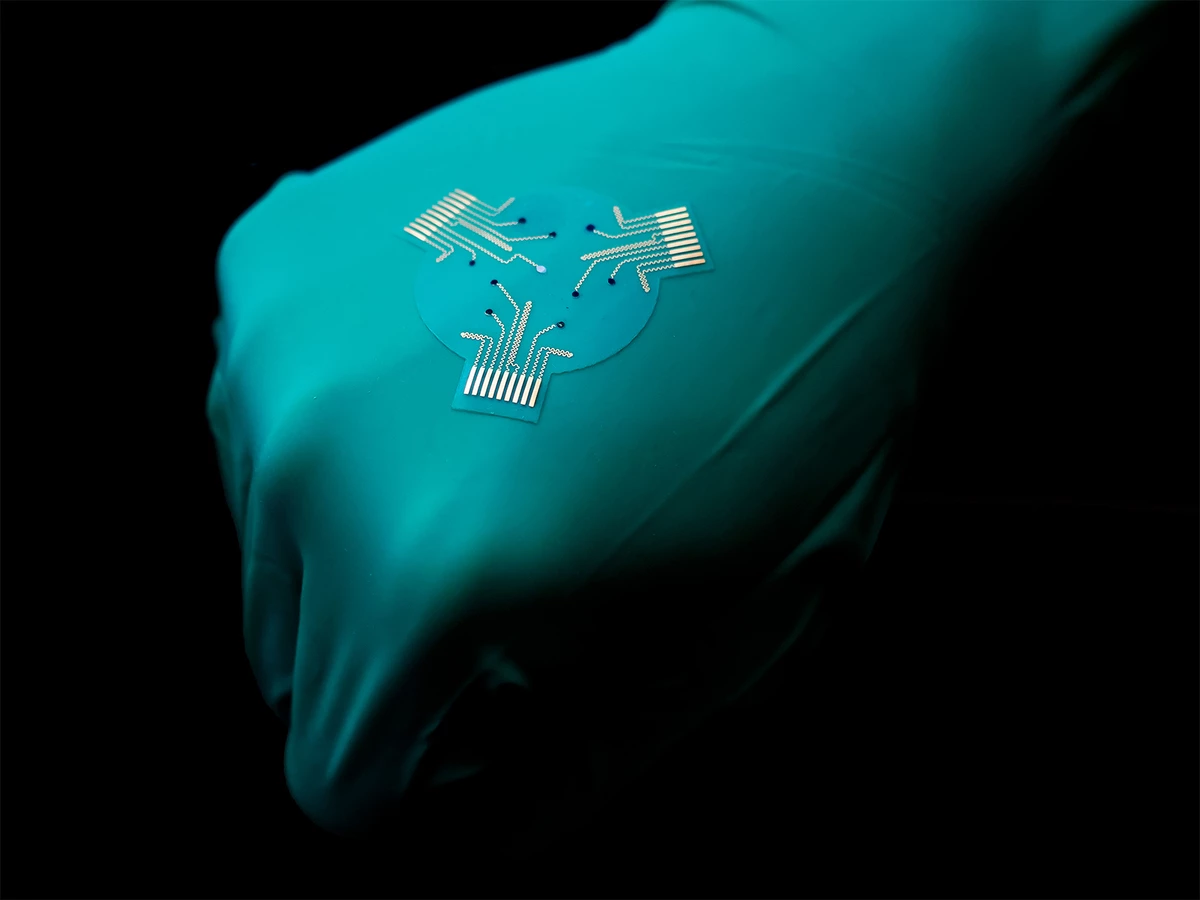If left untreated, chronic wounds such as diabetic skin ulcers can become infected, ultimately leading to amputations or even death. An experimental new "smart" bandage is designed to help keep that from happening, by both watching and treating such injuries.
Taking the form of an electronic skin-adhered patch, the dressing is being developed at the California Institute of Technology by a team led by Asst. Prof. Wei Gao.
It incorporates a flexible, stretchable, biocompatible polymer substrate, on the underside of which is an array of sensory electrodes, a pair of voltage-modulated electrodes, and a layer of drug-loaded hydrogel. Mounted on top of that substrate is a small, flexible printed circuit board which contains electronics such as a battery, Bluetooth chip, and temperature sensor.

Once applied directly to a wound site, the bandage continuously uses its sensors to check the concentration of chemicals like uric acid, ammonium, glucose and lactate – plus it checks for changes in the wound's pH and temperature – all of which are indicators of infection or inflammation.
If any such indicators are detected, the bandage responds by sending an alert to a nearby smartphone or other device. It also uses its voltage-modulated electrodes to trigger the release of medication from the hydrogel, and to deliver a low-voltage electrical current to the wound bed, stimulating the regrowth of new tissue.

In lab tests performed on rats, the technology proved to be successful at accurately relaying wound-status data, killing harmful bacteria such as E. coli, and at speeding the healing of chronic wounds similar to diabetic skin ulcers. Plans now call for human trials to be conducted.
"We have showed this proof of concept in small animal models, but down the road, we would like to increase the stability of the device but also to test it on larger chronic wounds because the wound parameters and microenvironment may vary from site to site," said Gao.
A paper on the research was recently published in the journal Science Advances.
Source: Caltech




